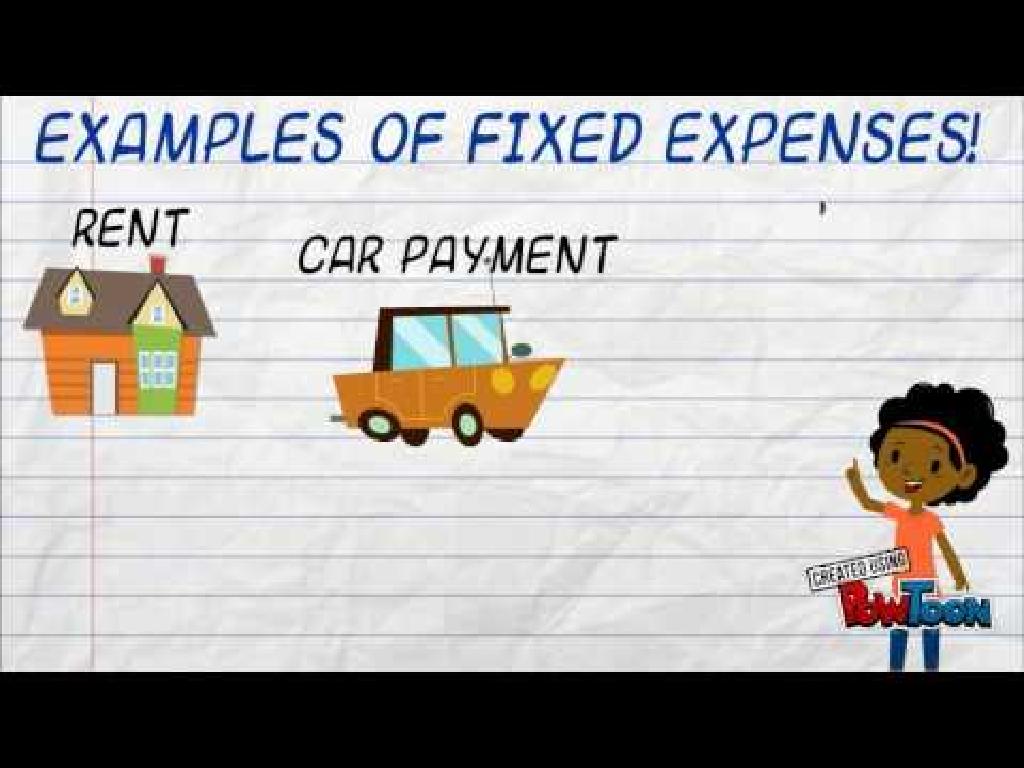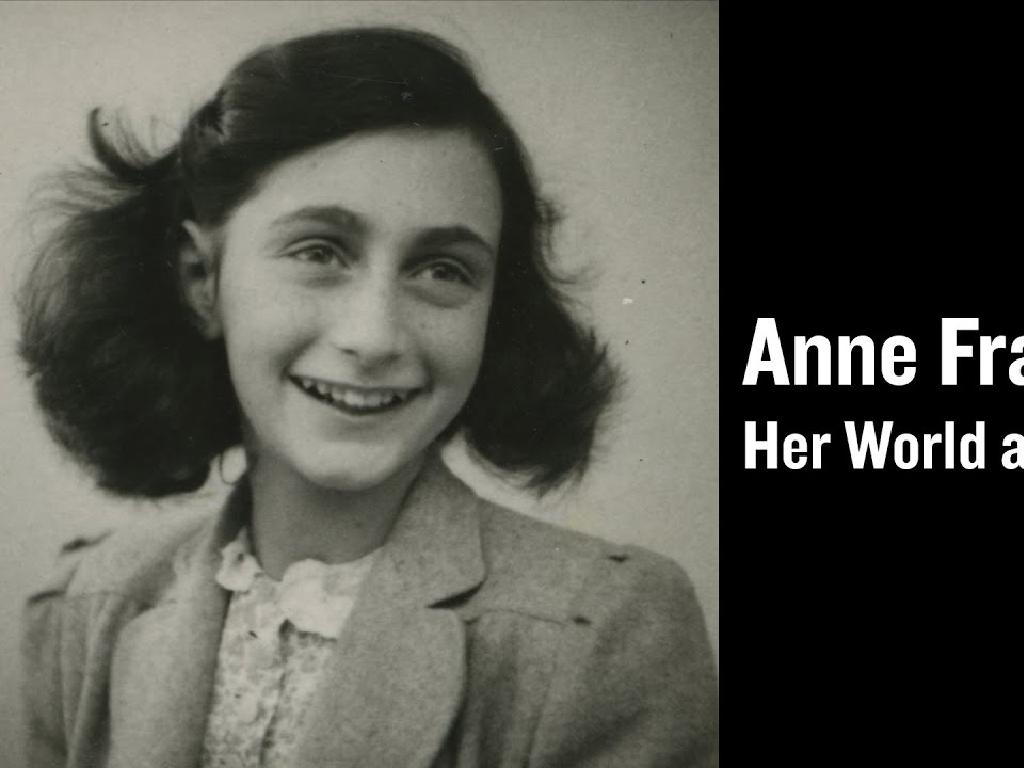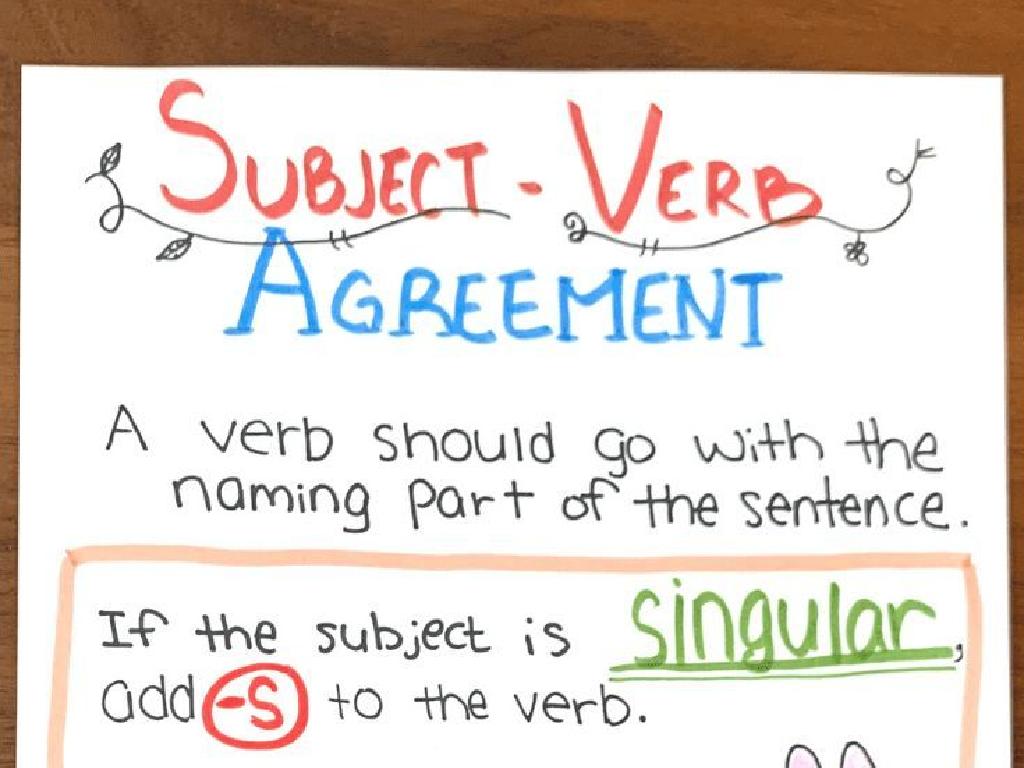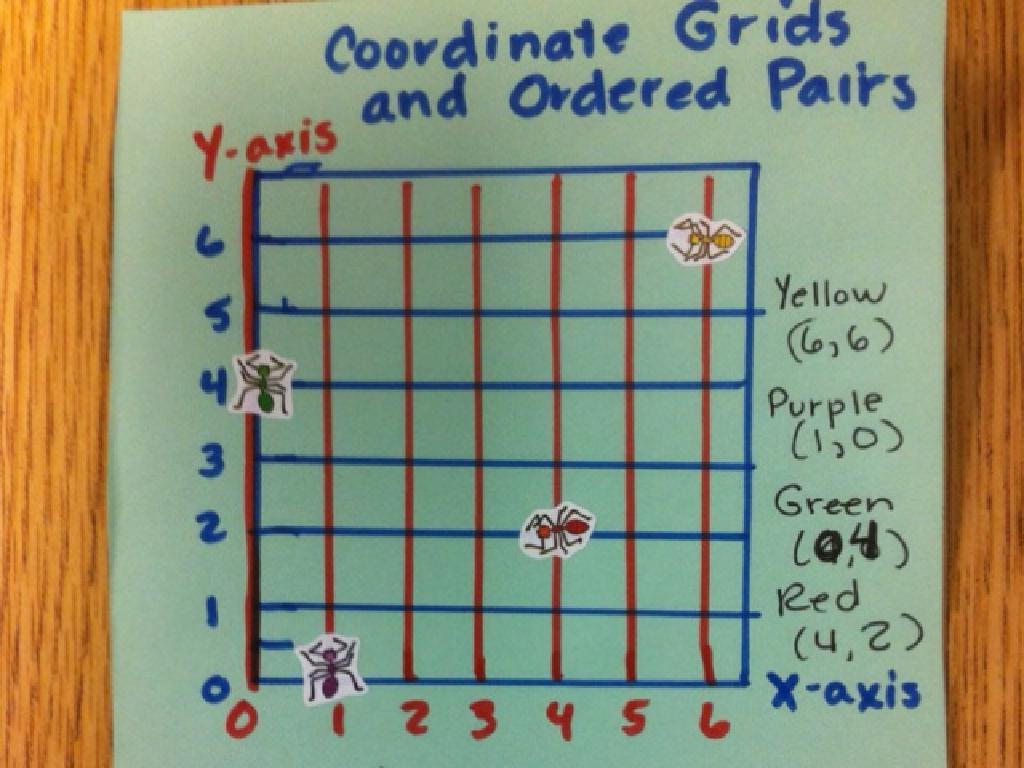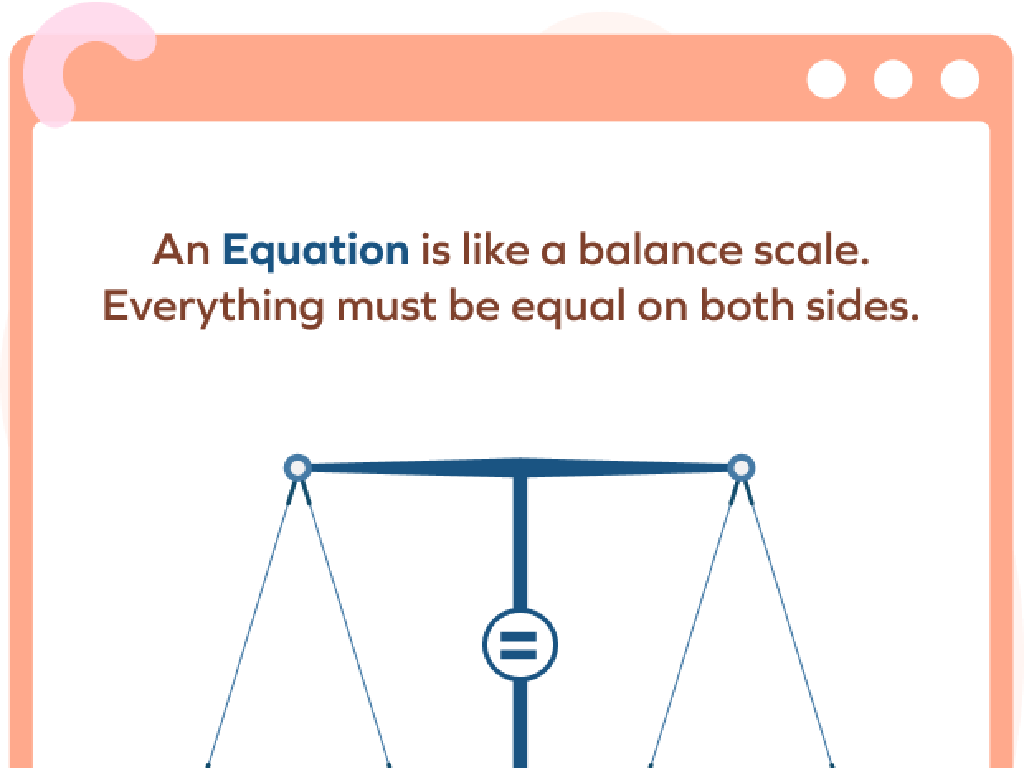Change-Of-State Diagrams: Liquid And Gas
Subject: Science
Grade: First grade
Topic: Changes Of State
Please LOG IN to download the presentation. Access is available to registered users only.
View More Content
Water Wonders: Liquid to Steam and Ice
– Water can change its form
– From liquid to steam
– When water boils, it becomes steam
– And liquid to ice
– When water freezes, it turns to ice
– These changes are amazing!
|
This slide introduces the concept of the states of matter and how water can transform from one state to another. Explain that water is usually a liquid, but it can change into steam (a gas) when it’s heated up and into ice (a solid) when it’s cooled down. These transformations are called changes of state. Use simple examples like boiling water for cooking or freezing water to make ice cubes to illustrate these concepts. Encourage the students to think of times they’ve seen water change from one state to another in their daily lives.
Exploring Liquids
– Liquids can flow
– Like water in a glass
– They take the shape of containers
– A liquid in a bowl becomes round at the bottom
– Water is a liquid example
– Think of milk, juice, or even honey
|
This slide introduces the concept of liquids to first graders. Start by explaining that liquids are a form of matter that can move around freely and don’t have a shape of their own. Use water as a primary example because it’s relatable and easily observable. Encourage the students to think of other liquids they encounter daily, like milk or juice, and discuss how these liquids behave in different containers. You can demonstrate this by pouring water into various shaped containers and showing how the water takes the shape of each one. This visual demonstration will help solidify their understanding of the properties of liquids.
Exploring Gases Around Us
– Gases are invisible
– Gases are like air, we can’t see them but they’re there
– Steam is water as a gas
– Boiling water makes steam, and steam is a gas
– Gases fill up space
– Air is a gas we breathe
– We can feel air, but it’s hard to see
|
This slide introduces the concept of gases to first graders by relating it to their everyday experiences. Start by explaining that gases are substances like the air around us; they are invisible but take up space. Use the example of boiling water to show how it turns into steam, a gas we can sometimes see. Highlight that gases are everywhere, even though we can’t always see them, like the air we breathe. Encourage the children to think about other examples of gases they might know and discuss how gases can be different from solids and liquids.
Changing States: Liquid to Gas
– Heat turns liquid into gas
– Like water boiling in a pot
– Water to steam example
– When we boil water, it becomes steam
– Heating makes molecules move faster
– Faster movement makes liquid become gas
– Steam is water as a gas
|
This slide introduces the concept of liquids changing into gases through the process of heating. Use the example of water boiling to become steam as a relatable demonstration of this change of state. Explain that heating a liquid makes its molecules move faster until they spread out enough to become a gas. Emphasize that steam is just water in its gas form. During the presentation, you can show a simple animation or video of water boiling to help students visualize the process. Encourage students to think of other examples where they have seen steam or water vapor. This will help them understand that heating can change the state of matter from liquid to gas.
Changing States: Gas to Liquid
– Gases turn to liquids when cold
– Steam to water on windows
– Like when your warm breath hits a chilly window and forms water droplets.
– Cooling steam makes water
– Imagine a pot of boiling water cooling down and seeing the steam turn back into water!
– Breath on window shows change
|
This slide is aimed at helping first graders understand the concept of condensation, where gas turns into a liquid when it cools down. Use everyday examples like seeing breath on a cold window to make the concept relatable. Explain that the steam or gas from our breath is like a cloud that turns back into tiny drops of water when it touches something cold. This is similar to how water vapor in the air turns into dew on grass. Encourage the students to think of times they have seen this happen, like on a cold day outside or when they’ve had a hot drink and seen the steam. This will help solidify their understanding of the change of state from gas to liquid.
Let’s Experiment with Water!
– Watch water turn from liquid to gas
– We’ll boil water to see steam
– Boiling water makes steam, which is water in gas form
– Steam cools down to water again
– When steam touches a cool surface, it turns back to liquid
– Discover the water cycle steps
|
This slide introduces a class activity where students will observe the transformation of water from a liquid to a gas and back to a liquid. The teacher will boil water to demonstrate how heat turns water into steam, a gas. Then, by exposing the steam to a cooler surface, students will see it condense back into liquid water. This experiment is a hands-on way to understand the water cycle and states of matter. Safety precautions should be emphasized, and the boiling should be done by the teacher or with close supervision. After the demonstration, discuss with the students where they might see this process happening in nature, such as morning dew or clouds forming in the sky.
Class Activity: Magic Water
– Boil water to see steam
– Steam meets cold plate
– Watch steam turn back to water
– Observe the magic change
– Water droplets appear!
|
This class activity is designed to demonstrate the change of state from liquid to gas and back to liquid. Teachers should boil water in a kettle or a pot to produce steam, ensuring safety measures are in place. As the steam rises, hold a cold plate above the kettle or pot and show students how the steam condenses back into water when it comes into contact with the cold surface. Explain that the steam is water in its gas form, and when it cools down, it changes back into liquid water. This visual and interactive demonstration helps solidify the concept of changes of state in young students’ minds. Possible variations of the activity could include using ice to show melting or freezing water to show solidification, depending on time and resources.
Review Time: Liquids and Gases
– Recap on liquids and gases
– Liquids flow and take the shape of their container, gases spread out to fill space.
– Water’s disappearing act
– We heated water and it vanished! It turned into a gas called water vapor.
– How did water reappear?
– When we cooled the vapor, it turned back into water droplets!
|
This slide is meant to review the key concepts learned about the states of matter, specifically liquids and gases. Start by asking the students to recall the properties of liquids and gases. Then, move on to the experiment conducted where water was heated until it evaporated and ‘disappeared.’ Discuss the process of evaporation and condensation, explaining that the water didn’t really disappear; it changed into a gas that we cannot see. When cooled, it condensed back into a liquid form. This interactive recap will help solidify their understanding of the changes of state between liquids and gases.
Science Explorers: Water’s Amazing Changes!
– Water can change from liquid to gas
– Water can change back to liquid from gas
– Science is about discovery and learning
– Just like you observed with water, science helps us learn about the world!
– Keep exploring and asking questions!
– What other changes can you think of or want to learn about?
|
This slide wraps up the lesson on the changes of state between liquids and gases, specifically focusing on water. Reinforce the concept that water can evaporate into a gas (steam) when heated and can condense back into a liquid when cooled. Emphasize the importance of curiosity and continual learning in science. Encourage the students to think about other materials that change state and to come to the next class with questions or observations they have made. This will help them apply the concept of change of state to other areas and understand that science is a dynamic field full of ongoing exploration.

